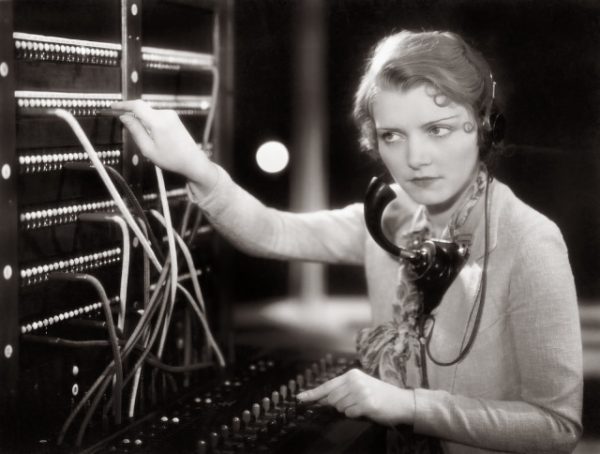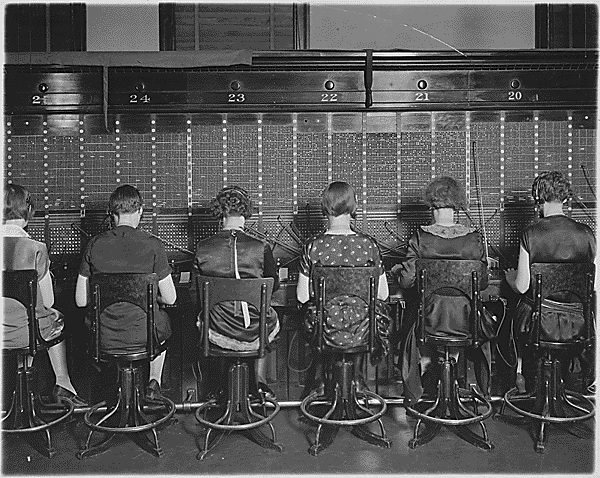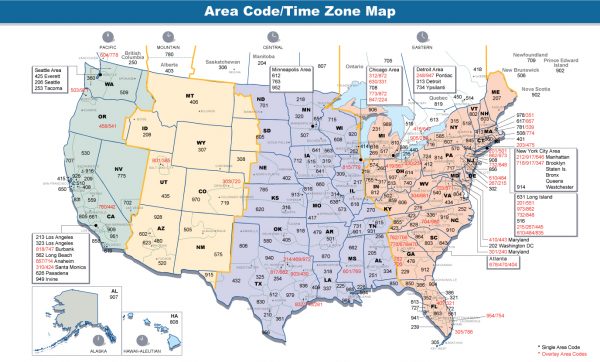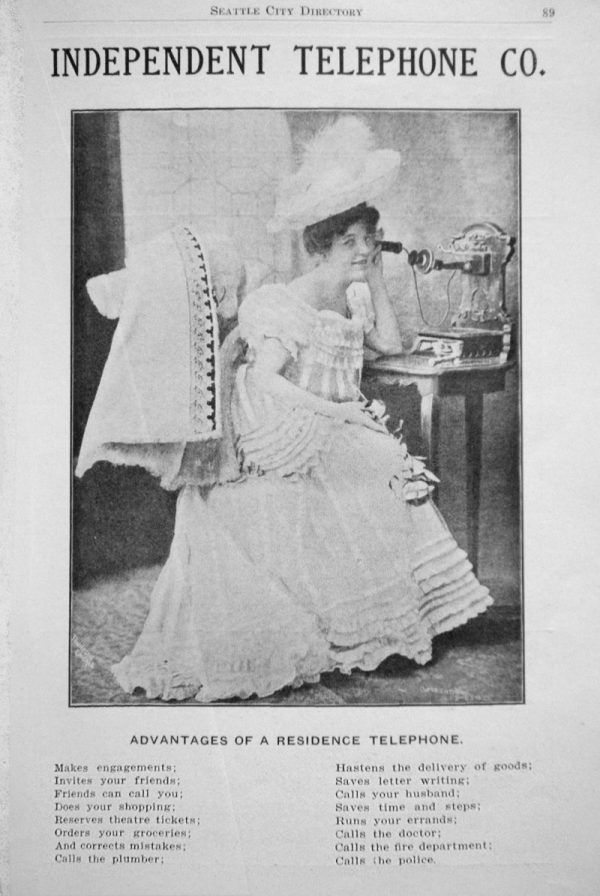These days, our phones tend to keep track of these things for us, but back when most people memorized numbers, they didn’t always make sense. The first digits of zip codes and social security numbers assigned in the United States ascend from east to west, starting low around the original American colonies and going up from there. Interstate numbering also follows east/west as well as north/south patterns. So how did the country wind up with such an odd layout of area codes? For context, we need to revisit the earlier days of the phone network.
Up through the 1940s, before Bell came up with the North American Numbering Plan for the US and other participating countries in the region, phone calls were mostly put through manually by operators.
Various semi-organized regional number systems added complexity as well. To help expand the network’s capabilities and make calling easier, Bell began dividing up areas not by geography but by population.
People would get ten-digit addresses starting with a three-digit area code and followed by the seven-digit subscriber number consisting of three digits for the central office and four digits for the station.
Technical ease informed the distribution of area codes: the lowest numbers were the most desirable to dial on rotary phones, requiring less rotation for each digit. Prominent and highly populated cities like Los Angeles (213), Chicago (312) and Detroit (313) were favored. Populous California got other area codes, too, but the higher-number ones were handed out to cities deemed less important. Note, too, that with the 0 being at the far end of the dial (next to 9), 1 was preferable for the second number in each sequence.
By using 0s and 1s as the second digit, the numbering system also allowed room to grow — over time, additional area codes could be added by using numbers 2 through 9 in those middle slots.
Predictably, this system was not entirely future-proof. Over time, people crowded into cities while new technologies (modems, faxes, pagers then mobile phones), necessitated ever more numbers. In some places, an additional digit has been added to accommodate demand.
Of course, the rise of cell phones has also changed the way we think about phone numbers, which are now stored and brought with us rather than memorized (or replaced entirely by other identifiers in different apps). Plus, as people move around, area codes now often move with them, making them less of a place-based identifier. So as the map of area codes has come to look increasingly chaotic, it has also become increasingly irrelevant in the era of mobile devices.







Comments (4)
Share
##########
How can this article not even make reference to the Octothorpe episode?
#145
https://99percentinvisible.org/episode/octothorpe/
As a long time phone guy (disclaimer: I work for AT&T) there are a few more more points that are worth making.
First and foremost, the use of lower numbers wasn’t simply a matter of desirability, and wasn’t for the convenience of users, but for the efficient use of inter-city trunk circuits. As you note, long distance calls were placed by operators (direct distance dialing was first introduced in 1951), but the called number still needed to be signaled on the trunk circuits between the switches in the various cities and the “tandem” switches that connected them. At the time, signaling was done by sending audible “pulses” on the trunk circuit, with 10 to 20 pulses per second. Sending a “2” required sending 2 pulses; sending a “9” required sending 9 pulses, and sending a “0” required sending 10. A call to the 212 area code required only 5 pulses, while a call to the 605 area code (South Dakota) required 21.
Because the called number was signaled inband on the trunk circuit, the circuit was in use (and could not be used for another call) – but not generating any toll revenue, because the call was not completed – for the time that the called number was being signaled. So the numbering plan was designed to require the fewest number of pulses – and therefore the shortest signaling time – for the destinations with the largest number of customers which would be expected to receive the greatest number of calls. “Importance” wasn’t a value judgment, but rather a question of call volume.
Secondly, the use of 0 or 1 as the second digit of an area code wasn’t intended to allow room for growth – it would have been far more efficient to allow 2-9 as the second digit of area codes from the start, to allow for more area codes with fewer dial pulses required. But when direct distance dialing was introduced, “local” calls (within the same area code) did not require the caller to dial the area code, and many telephone switches could only distinguish between an area code and an exchange code – and therefore determine whether to require seven more digits or only four more digits – by whether the second digit dialed by the caller was a 0/1 or 2-9. (This could get into a whole discussion about whether dialing “1” before the number indicated that the number included an area code or whether it indicated that the call was a toll call, which was generally a decision made by the state public utility commissions and therefore was different in different places – and to this day, requires telephone companies to have different processing in place for seven digit and ten digit dialed numbers, both with and without a “1” prefix, in different jurisdictions.)
Finally, while additional digits have been added to phone numbers in some places (especially where there have historically been variable-length phone numbers), none of those places are within the US, Canada, or any other jurisdictions within the North American Numbering Plan – NANP numbers remain 10 digits.
Very interesting discussion. Thank you for sharing the truth behind the numbers which I never imagine existed.
“The first digits of zip codes and social security numbers assigned in the United States ascend from east to west…. Interstate numbering also follows east/west as well as north/south patterns.”
Interstate numbers follow the OPPOSITE pattern, with low numbers in the West and South and high numbers in the East and North.